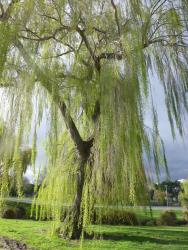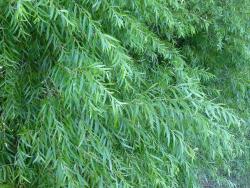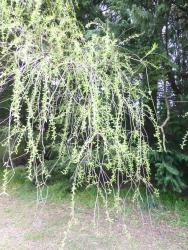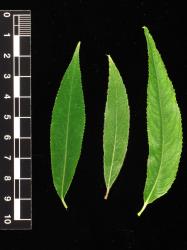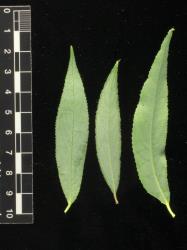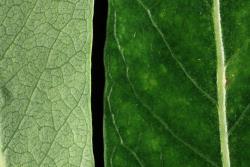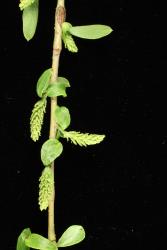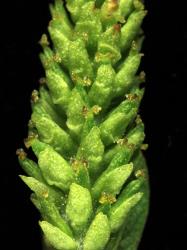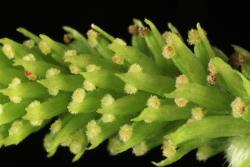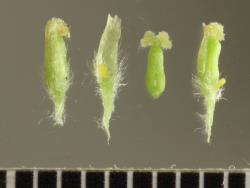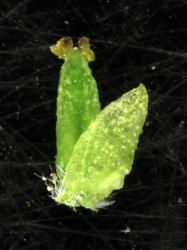Trees to 15 m tall, bark grey-brown and fissured. Branchlets pendulous, unbranched terminal portion sometimes 1.0 m long or more. Current year's branchlets glabrous to moderately densely short-silky hairy, hairs not persisting. Petiole 8–17 mm long, glabrous or sparsely to densely tomentose with short-silky hairs, base pale yellow, glands 0–4, brown to black. Emerging leaves sparsely to densely long-silky hairy. Proximal leaves toothed, rarely entire. Leaf lamina 105–173 mm long, 15–35 mm wide, length to width ratio 4.2–7.7:1, very narrowly ovate, base cuneate; apex very narrowly acute; leaf galls absent; orange rust absent in late summer; margins densely serrulate, flat; upper lamina surface smooth, medium glossy, glabrous but sometimes hairs persist, particularly on midvein, lower lamina surface with midvein raised, distinctly glaucous, glabrous or with moderately dense short- or long-silky hairs. Catkins female (f. pendulina) or androgynous (f. salamonii), emergence coetaneous with or after emergence of leaves. Female catkins 17–38 mm long, 5–9 mm diameter; catkin rachis not visible between flowers. Flower bract pale green, narrowly ovate, apex acute, channelled, curved inward; silky hairs on inner and outer base and margins. Female nectary 1, yellow; ovary 2.2–7.0 mm long, glabrous, stomata present, sessile or with a short stipe up to 0.2 mm long; style base 0.4 mm long, style arms 0.3–0.5 mm long, unlobed, stigmatic surfaces hyaline.
| Category | Number |
|---|---|
| Exotic: Fully Naturalised | 1 |
| Exotic: Casual | 1 |
| Total | 2 |



